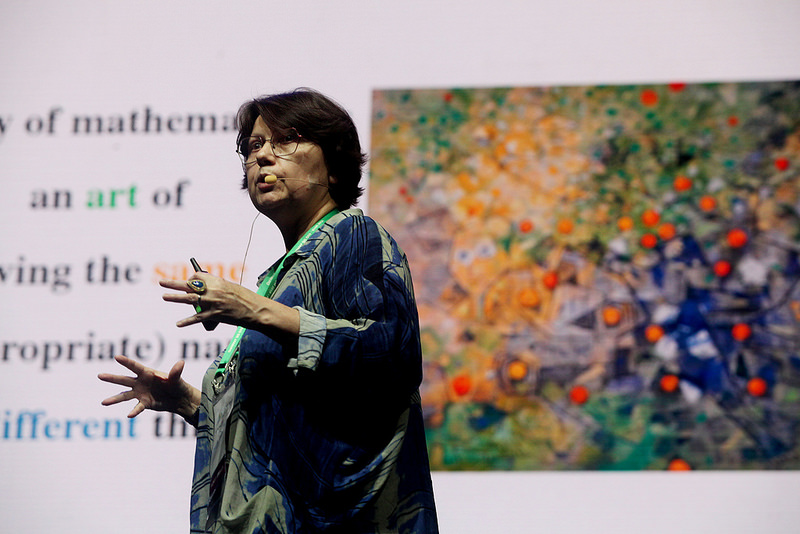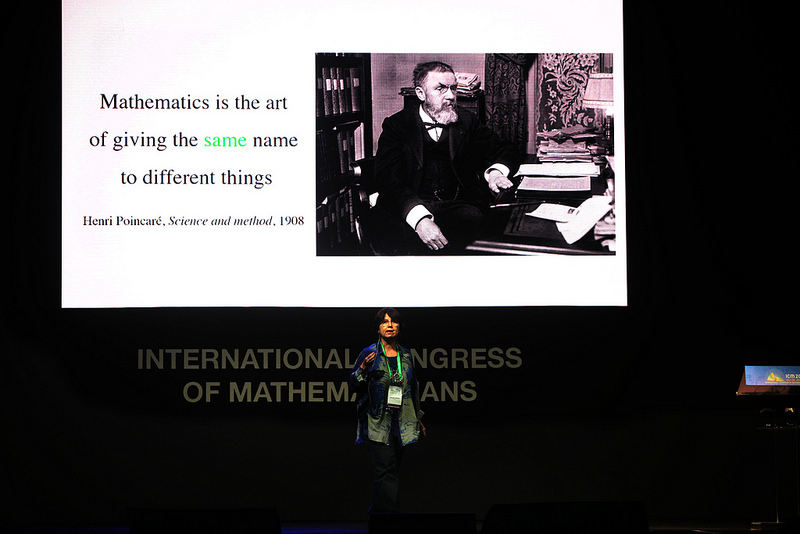August 6, 2018, 2:03 pm

Catherine Goldstein is making her mark developing a social history of mathematics. The French number theorist and historian now directs her efforts at analyzing and unveiling the structure and circulation of mathematical knowledge – no simple task.
The history of mathematics is often portrayed as a series of big discoveries. As a historian, she is often asked questions such as ‘Did Charles Hermite invent Hermitian forms?’ In her plenary lecture, “Long-term history and ephemeral configurations,” today at ICM 2018, she said that there is rarely a straightforward answer.
Read more:
It’s a messy web of individual steps that paint an unclear picture. “It’s not the great achievements of a few individuals, but really a lot of collaborative activity.” Nobody invents these ideas or pulls them out of thin air, she said. Rather, observations build on top of one another and go in certain directions depending on the restrictions of the time. Goldstein’s goal is to restitute mathematics as a collective activity and situate individual achievements within it.
“How can we write a general history of Hermitian forms?” she asked the eager audience. “It’s a complicated and bizarre picture.” Her example narrowed in on the use of projected geometry in engineering. The theorem of the geometry of positions could be written and solved directly on the blueprints, instead of having to use a separate piece of paper to expand analytic computations – a very practical reason for its popularization. Ultimately, this surprising reason took geometry in a specific direction.
“At the time, we had to imagine everything, even abstract ideas. We could picture lines in the 4th and 5th dimension,” commented 89-year-old mathematics idol, Michael Atiyah, at the end of her lecture, “I really enjoyed being taken back to my youth.”
